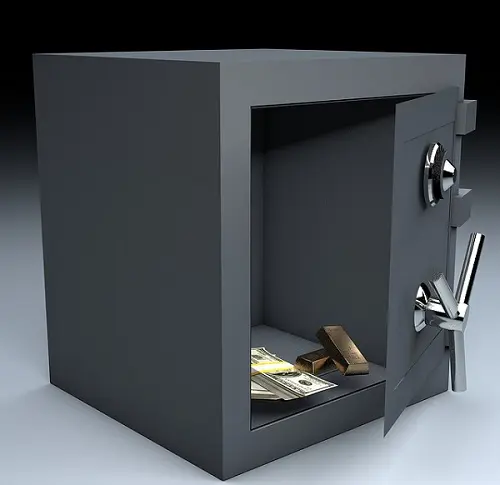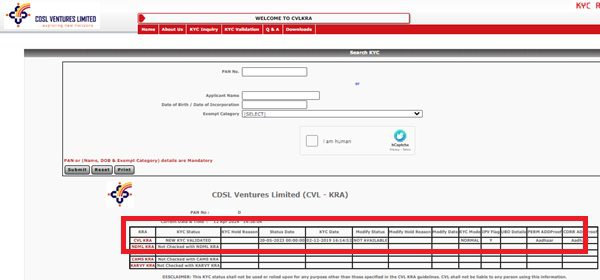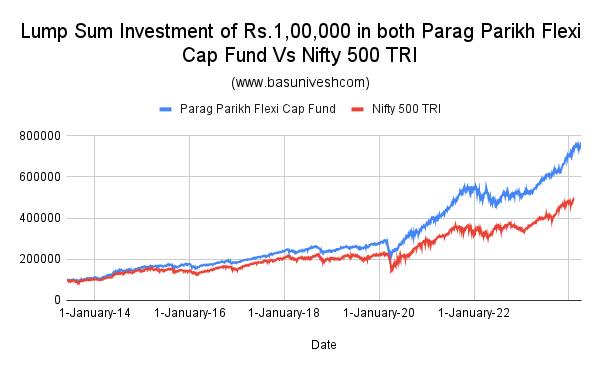As per the latest Bank lockers safety rules in India, who is responsible for the theft or robbery of the locker? Whether Fixed Deposit is required to open the lockers? What if you lost the locker key? What if you do not pay the rent of the locker? When can banks break your locker? Let us find the answers to all these questions in this post.

Many of us think that if we are keeping our valuables in Bank lockers, then it is safe. However, it is not the case. Recently RBI came out with a new set of guidelines on Bank Lockers. Hence, it is better to understand the latest bank lockers safety rules in detail.
What is Bank Locker?
It is nothing but a kind of account to keep your valuables ranging from jewellery or land documents. There are two keys to the locker. One key is with Bank and the other is with the locker holder.
The locker can only be opened when both the keys are used at the same time. Generally bank official applies the key and then leaves the locker room and only after they leave, you can open the locker door and do what you wanted to do. The banks use very high quality, secured lockers. This will give you the highest safety compared to keeping the valuables in your home.
Latest Bank Lockers Safety Rules -2021
Let us now discuss the recent changes incorporated into the Bank lockers safety rules and operational guidelines. I will list them below.
# You may not be a customer of the bank to get the locker facility
Yes, earlier few banks used to follow this rule. If you are an existing customer of the bank, then only the locker used to be provided to you. However, as per the new RBI rule, it is not mandatory to be a customer of the bank to avail locker facility. RBI clearly mentioned this in its notification dated 18th August 2021.
“Customers who are not having any other banking relationship with the bank may be given the facilities of safe deposit locker / safe custody article after complying with the CDD criteria under the Master Direction – Know Your Customer (KYC) Directions, 2016 (as updated from time to time) and subject to on-going compliance. The due diligence shall be carried out for all the customers in whatever rights and capacities they may be hiring the locker.”
Along with this, RBI also mentioned that you have to disclose in the agreement itself that you will not keep anything illegal or any hazardous substance in the Safe Deposit locker. If the bank suspects the deposit of any illegal or hazardous substance by any customer in the safe deposit locker, the bank shall have the right to take appropriate action against such customer as it deems fit and proper in the circumstances.
# Locker Allotment
In order to facilitate customers making informed choices, banks shall maintain a branch wise list of vacant lockers as well as a wait-list in Core Banking System (CBS) or any other computerized system compliant with Cyber Security Framework issued by RBI, for the purpose of allotment of lockers and ensure transparency in allotment of lockers. The banks shall acknowledge the receipt of all applications for allotment of locker and provide a wait list number to the customers, if the lockers are not available for allotment.
Remember that RBI is not specified anywhere that banks have to give priority to their existing customers. Hence, whether you have a banking relationship with them or not, banks have to assign the locker to you based on a first come first serve basis.
At the time of allotment of the locker to a customer, the bank shall enter into an agreement with the customer to whom the locker facility is provided, on a paper duly stamped. A copy of the locker agreement in duplicate signed by both the parties shall be furnished to the locker-hirer to know his/her rights and responsibilities. Original Agreement shall be retained with the bank’s branch where the locker is situated.
# Locker Rent
This is an important rule to note. Because in many cases, banks charge you locker rent and also force you to do the deposit more than the specified limit as per RBI.
Banks may face potential situations where the locker-hirer neither operates the locker nor pays the rent. To ensure prompt payment of locker rent, banks are allowed to obtain a Term Deposit, at the time of allotment, which would cover three years’ rent and the charges for breaking open the locker in case of such eventuality. Banks, however, shall not insist on such Term Deposits from the existing locker holders or those who have a satisfactory operative account. The packaging of allotment of locker facility with the placement of term deposits beyond what is specifically permitted above will be considered as a restrictive practice.
Refer to the above highlighted words. Banks can’t force you to deposit beyond this.
If locker rent is collected in advance, in the event of surrender of a locker by a customer, the proportionate amount of advance rent collected shall be refunded to the customer.
If there is any event such as merger / closure / shifting of branch warranting physical relocation of the lockers, the bank shall give public notice in two newspapers (including one local daily in vernacular language) in this regard and the customers shall be intimated at least two months in advance along with options for them to change or close the facility. In case of unplanned shifting due to natural calamities or any other such emergency situation, banks shall make efforts to intimate their customers suitably at the earliest.
# Lockers safety and standard
Banks have to ensure that the area in which the locker facility is housed is properly secured to prevent criminal break-ins. The risks of accessibility of an allotted locker from any side without involvement of the locker-hirer concerned may be assessed and kept on record. Banks shall have a single defined point of entry and exit to the locker room/vault. The place where the lockers are housed must be secured enough to protect against hazard of rain / flood water entering and damaging the lockers in contingent situations. The fire hazard risks of the area should also be assessed and minimized. The banks, as per their policy, shall conduct necessary engineering / safety verification regularly to identify the risks and carry out necessary rectification.
The area housing the lockers should remain adequately guarded at all times. The banks shall install Access Control System, if required as per their risk assessment, which would restrict any unauthorized entry and create digital record of access to locker room with time log. As per their internal security policy, banks may cover the entry and exit of the strong room and the common areas of operation under CCTV cameras and preserve its recording for a period of not less than 180 days. In case any customer has complained to the bank that his/her locker is opened without his/her knowledge and authority, or any theft or security breach is noticed/observed, the bank shall preserve the CCTV recording till the police investigation is completed and the dispute is settled.
All the new mechanical lockers to be installed by the banks shall conform to basic standards / benchmarks for safety and security as prescribed by Bureau of Indian Standards (BIS) or any other enhanced industry standards applicable in this regard.
The customers’ personal data, including their biometric data, shall not be shared with third parties without their consent. Further, banks shall ensure that the electronically operated lockers are compliant with the Cyber Security Framework prescribed by the Reserve Bank. The system should be capable of maintaining unalterable log of locker activities. The banks shall comply with the relevant statutory / regulatory guidelines/requirements applicable for IT / data protection. Further, the banks shall also devise a standard operating procedure for issue of new password in lieu of lost passwords to customers in a safe and secure manner in case of electronically operated lockers.
# Locker Operation
The bank’s officer authorizing the locker-hirer to access the locker, after unlocking the first key / password shall not remain present when the locker is opened by the locker-hirer. The banks shall ensure that there is adequate privacy to the locker-hirers in the operations when customers access the lockers at the same time.
Banks shall send an email and SMS alert to the registered email ID and mobile number of the customer before the end of the day as a positive confirmation intimating the date and time of the locker operation and the redressal mechanism available in case of unauthorized locker access.
The bank custodian shall check whether the lockers are properly closed post locker operation. If the same is not done, the lockers must be immediately closed, and the locker-hirer shall be promptly intimated through e-mail, if registered or through SMS, if mobile number is registered or through letter so that they may verify any resulting discrepancy in the contents of the locker. The bank custodian shall record the fact of not closing the locker properly in the register and its closure by the bank with the date and time. Further, the custodian of the locker room shall carry out a physical check of the locker room at the end of the day to ensure that lockers are properly closed, and that no person is inadvertently trapped in the locker room after banking hours.
# Settlement of Claims in case of death of a Customer
Banks shall have a Board approved policy for nomination and release of contents of safety lockers / safe custody article to the nominee and protection against notice of claims of other persons in accordance with the provisions of Sections 45 ZC to 45 ZF of the Banking Regulation Act, 1949 and the Banking Companies (Nomination) Rules, 1985/Co-operative Banks (Nomination) Rules, 1985 and the relevant provisions of Indian Contract Act and Indian Succession Act.
In order to ensure that the articles left in safe custody and contents of lockers are returned to the genuine nominee, as also to verify the proof of death, banks shall devise their own claim formats, in terms of applicable laws and regulatory guidelines.
Banks shall settle the claims in respect of deceased locker hirers and shall release contents of the locker to survivor(s) / nominee(s), as the case may be, within a period not exceeding 15 days from the date of receipt of the claim subject to the production of proof of death of the depositor and suitable identification of the claimant(s) with reference to nomination, to the bank’s satisfaction.
# When can breaking of your locker may happen?
This means the breaking open of the locker in a manner other than through the normal access by the customer using her/his original key or password under any one of the following circumstances:
(i) if the hirer loses the key and requests for breaking open the locker at her /his cost; or
(ii) if the Government enforcement agencies have approached the bank with orders from the Court or appropriate competent authority to seize lockers and requested for access to the lockers; or
(iii) if the bank is of the view that there is a need to take back the locker as the locker hirer is not co-operating or not complying with the terms and conditions of the agreement.
# What if you lost the locker key?
If the key of the locker, supplied by bank is lost by the locker-hirer, the customer (locker hirer) shall notify the bank immediately. An undertaking may also be obtained from the customer that the key lost, if found in future, will be handed over to the bank. All charges for opening the locker, changing the lock and replacing the lost key may be recovered from the hirer. The charges applicable for replacement of lost keys / issue of new password shall be communicated to the locker hirer.
The operation shall be done in the presence of the customer/s and an authorized official of the bank. It has to be ensured that the adjoining lockers are not impacted by any such operations and the contents of the lockers are not exposed to any individual other than the locker-hirer during the break-up or restoration process.
The opening of the locker has to be carried out by the bank or its authorized technician only after proper identification of the hirer, proper recording of the fact of loss and written authorization by the customer for breaking open the locker.
# What if there is any attachment and recovery of contents by any Law Enforcement Authority?
In case of attachment and recovery of the contents in a locker of a customer or the articles left by a customer for safe custody of the bank by any Authority acting either under the orders of a Court or any other competent authority vested with the power to pass such orders, the banks shall co-operate in execution and implementation of the orders.
The customer (locker-hirer) shall be informed by letter as well as by email/SMS to the registered email id/mobile phone number that the Government Authorities have approached for attachment and recovery or seizure of the locker or articles deposited for safe custody. An inventory of the contents of locker and articles seized and recovered by the Authority shall be prepared in the presence of such Government Authorities, two independent witnesses and an officer of the bank and shall be signed by all. A copy of the inventory may be forwarded to the customer to the address available in the bank’s records or handed over to the customer against acknowledgement.
Banks shall also record a video of the break-open process and the inventory assessment, wherever legally permissible, and preserve the video to produce as evidence in case of any dispute or Court or fraud case in future.
# What if you not pay the rent of locker?
Banks shall have the discretion to break open any locker following due procedure if the rent has not been paid by the customer for three years in a row. The bank shall ensure to notify the existing locker-hirer prior to any changes in the allotment and give him/her reasonable opportunity to withdraw the articles deposited by him/her. A clause may be incorporated in the locker agreement to this effect.
Before breaking open the locker, the bank shall give due notice to the locker-hirer through a letter and through email and SMS alert to the registered email id and mobile phone number. If the letter is returned undelivered or the locker-hirer is not traceable, the bank shall issue public notice in two newspaper dailies (one in English and another in local language) giving reasonable time to the locker-hirer or to any other person/s who has interest in the contents of locker to respond. The locker shall be broken open in the presence of an officer of the bank and two independent witnesses. In case of electronically operated lockers (including Smart Vaults), the use of ‘Vault Administrator’ password for opening of locker shall be assigned to a senior official and complete audit trail of access shall be preserved. Further, banks shall also record a video of the break open process together with inventory assessment and its safe keep and preserve the same so as to provide evidence in case of any dispute or Court case in future. Banks shall also ensure that the details of breaking open of locker is documented in CBS or any other computerized systems compliant with the Cyber Security Framework issued by RBI, apart from locker register. After breaking open of locker, the contents shall be kept in sealed envelope with detailed inventory inside fireproof safe in a tamper-proof way until customer claims it. A record of access to the fireproof safe shall invariably be maintained. While returning the contents of the locker, the bank shall obtain acknowledgement of the customer on the inventory list to avoid any dispute in future.
# What if you do not operate the locker for long period?
If the locker remains inoperative for a period of seven years and the locker-hirer cannot be located, even if rent is being paid regularly, the bank shall be at liberty to transfer the contents of the locker to their nominees/legal heir or dispose of the articles in a transparent manner.
# Liability of the bank for locker
The bank shall not be liable for any damage and/or loss of contents of locker arising from natural calamities or Acts of God like earthquake, floods, lightning and thunderstorm or any act that is attributable to the sole fault or negligence of the customer. Banks shall, however, exercise appropriate care to their locker systems to protect their premises from such catastrophes.
Liability of banks arising from events like fire, theft, burglary, dacoity, robbery, building collapse or in case of fraud committed by the employees of the bank – It is the responsibility of banks to take all steps for the safety and security of the premises in which the safe deposit vaults are housed. It has the responsibility to ensure that incidents like fire, theft/ burglary/ robbery, dacoity, building collapse do not occur in the bank’s premises due to its own shortcomings, negligence and by any act of omission/commission. As banks cannot claim that they bear no liability towards their customers for loss of contents of the locker, in instances where loss of contents of locker are due to incidents mentioned above or attributable to fraud committed by its employee(s), the banks’ liability shall be for an amount equivalent to one hundred times the prevailing annual rent of the safe deposit locker.
As banks do not keep a record of the contents of the locker or of any articles removed therefrom or placed therein by the customer, they would not be under any liability to insure the contents of the locker against any risk whatsoever.
Banks shall under no circumstances offer, directly or indirectly, any insurance product to its locker hirers for insurance of locker contents.










2 Responses
Sir, I left my previous company on 26/6/2019 and I want to claim my superannuation fund. This is because present company where I am working does want to accept the transfer. What will the tax charged and my fund value is around 11lakhs.
Dear Manjunatha,
It will be taxed as per your tax slab.